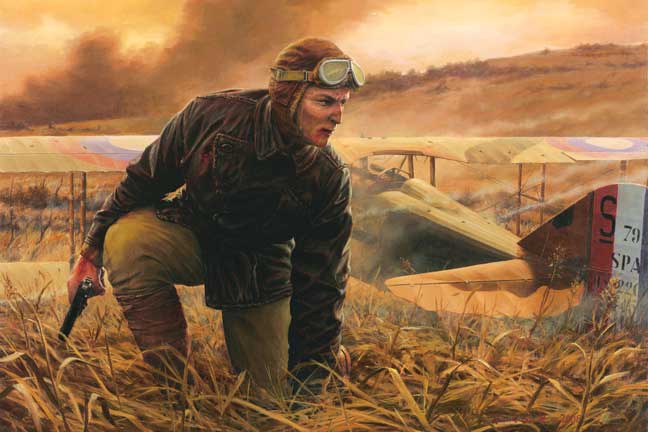April 20, 2017
By G&A Staff

Lt. Frank Luke Jr. was the first airman to receive the Medal of Honor. He was an American fighter ace, ranking second only to Capt. Eddie Rickenbacker in number of aerial victories with 18. Luke successfully brought down 14 heavily defended German observation balloons and four airplanes in just 10 sorties between Sept. 12 and Sept. 29, 1918.
In the late afternoon of Sept. 29, Luke took out two German ballons near Murvaux, France, during the first phase of the Meuse-Argonne Offensive. The weather was poor and a low ceiling of cloud cover kept Luke near the ground as he flew. After circling the village and turning back toward the Allied lines, he was struck in the upper right chest by anti-aircraft fire.
Immediately, Luke landed the SPAD XIII in a field next to the Cote St. Germain, a hill west of Murvaux. Luke managed to struggle free of the airplane and crawled 50 yards down to a creek for cover. German infantry tracked him down and demanded his surrender.
Advertisement
Luke responded by drawing his Colt Model 1911 from its holster and fired at his enemies before succumbing to his wound moments later. Reports that his body was found the next day with an empty pistol and seven dead Germans around him became the source of legend and controversy.
However, the last great mystery of World War I was solved by author Stephen Skinner who spent 15 years investigating the site and interviewing witnesses. Skinner's findings were published in his book "The Stand: The Final Flight of Lt. Frank Luke, Jr."
The SPAD XIII flown by Luke is one of five surviving examples and is on display at Phoenix's Sky Harbor airport. The plane retains 80 percent of its original parts.
Advertisement
Enjoy articles like this?
Subscribe to the magazine.
Get access to everything Guns & Ammo has to offer.
Subscribe to the Magazine
